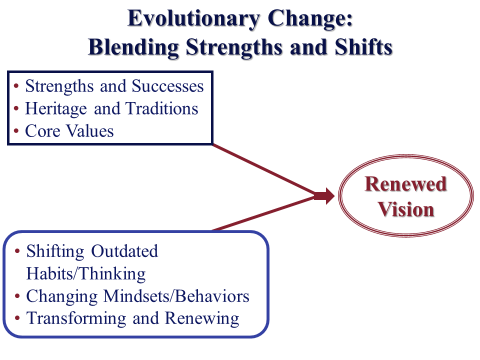
I was waiting to deliver a workshop on “leading change” at a company’s management meeting of their top leaders. The new CEO was setting the context with observations of his first few months, his vision for the coming years, and the strategic priorities for the next year. Essentially his message boiled down to, “you’ve been doing fairly well, but you’re a pretty screwed up company. I am here to turn this around and fix you.” He was their savior. He seemed to expect the hallelujah choir to herald his arrival in the nick of time.
Most of us can embrace change — especially if we feel it’s for the better. What we resist is being changed — especially focused on our mistakes and weaknesses. This CEO was falling into the age-old heroic management trap. He gives a short grunt to their accomplishments and a big shout out to where they fell short. This is way too common. And it’s a major cause of resistance to change.
Change leaders need a better balance. Leveraging strengths, building on successes, and honoring the organization’s positive history often centered on core values is energizing. In these turbulent times, we also need to shift outdated habits and thinking, change mindsets and behaviors, and continuously improve and renew our organizations.

In the past few years, I’ve added an exercise to the beginning of planning retreats I am facilitating. We start with small groups generating Post-It-Notes on the biggest accomplishments/successes of the past year. These are then posted in clusters with headings describing each grouping. The exercise takes about half an hour. It’s time very well invested. Participants are always energized – and pleasantly surprised by what they’ve done. This puts everyone in a more positive mindset for tackling the core challenges and changes at the heart of the planning session.
A build on this approach follows group visioning with an exercise outlining strengths we can leverage and shifts we need to make to reach our vision. Leaders can use a shortened version of this at their team meetings. Start the meeting with 10 minutes on what we’ve accomplished since our last meeting, a bragging session, what’s working, recognition, and so on. Get the team into a have-done/can-do mindset.
Contrast that heroic leader with another one who took a more balanced approach. She began her comments with examples of effectiveness she noted in her first few months in the organization. She talked about the organization’s traits that made it successful and acknowledged past leaders — some in the room — who contributed to that. She then went on to talk about the need for change to continue their evolution as past leaders had done in the past when the going got tough.
Which leader do you think inspired the highest energy levels? You’re right. Resistance to change that she encountered was much lower. Is your change leadership raising or lowering resistance?


Want to discuss this post? Contact us!